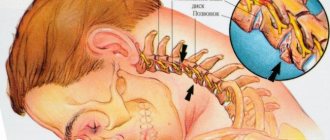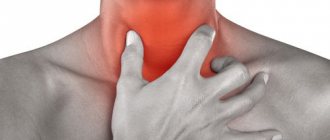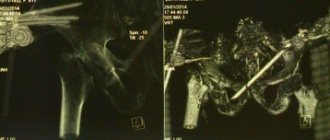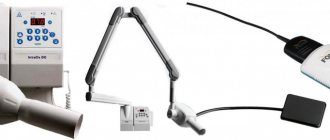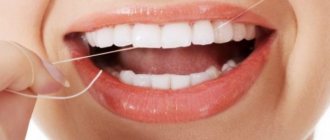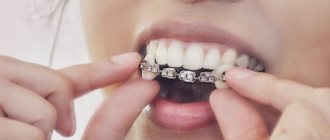X-ray and breastfeeding
X-rays and breastfeeding (BF) are not mutually exclusive events. It is not necessary to wean your baby to take an x-ray. Irradiation does not cause changes in the composition of mother's milk. Immediately after the x-ray examination, you can start feeding again.
If there is evidence for a nursing mother, an x-ray can be taken. The composition of breast milk remains unchanged even when X-rays are performed with contrast. The contrast agent formula contains mainly iodine molecules, which are excreted from the body naturally unchanged.
If a woman had an X-ray of her lungs during breastfeeding, then doctors may recommend not feeding the child for 2-3 hours after the examination.
Injuries, bruises, fractures are indications for a chest scan. The image allows you to determine the location of the damage and its complexity. Such an examination may be needed at any stage of feeding.
During pregnancy and lactation, a woman faces calcium deficiency, which manifests itself, for example, in intense toothache and other similar problems. To decide on a dental treatment algorithm, experts advise taking an X-ray of the tooth during breastfeeding.
The process of tooth extraction in a nursing mother
The procedure for a woman during lactation is no different from that performed for ordinary patients.
Extirpation of a dental unit is carried out in stages:
- antiseptic treatment of mucous membranes;
- anesthesia with local antiseptics or general anesthesia;
- applying forceps and disconnecting the ligament;
- rocking or dislocation;
- extraction from the hole;
- stop bleeding.
If the third molar from below is removed, the operation becomes more complicated. In order to pull it out, the doctor cuts the gum, removes part of the bone, divides the roots into fragments and removes them separately. To prevent infection, the wound is treated with antibacterial drugs. After all manipulations, the gums are sutured with absorbable or non-absorbable suture material.
How can a nursing mother prepare for x-rays?
Breastfeeding is not a reason to refuse x-rays. Mothers often worry about its effect on lactation. The safety of the examination has been proven; it does not affect the baby or breast milk. Preparation for the procedure consists of observing the following rules:
- Before the examination, feed the baby,
- express the required amount of milk if breastfeeding is interrupted for a while after the examination,
- during an X-ray examination without a contrast agent, you do not need to express your milk; you can feed the baby immediately after the procedure is completed,
- Make sure that you wear a protective lead apron during fluoroscopy.
Some doctors recommend withholding feeding if a contrast agent has been used. The safety of this procedure has not been fully proven.
What is an x-ray?
This is one of the types of radiation. If you think that X-ray radiation is present only in the X-ray room, then we can say right away that you are very mistaken. Let's remember physics lessons. We receive small doses of radiation every day:
- outdoors, from a natural source of radiation - the sun;
- at home from household sources located in the apartment: from a TV, various gadgets, a refrigerator, etc.
Radiation is measured in sieverts. What is the rate of radiation that a person can consume? Acceptable is 1000 sieverts per year.
Now let's remember mathematics and calculate how many X-rays can be taken for a person. A targeted image of one tooth is equal to 2-3 microsieverts. You can take 300-500 x-rays per year. A panoramic photograph (all teeth) is equal to 16-18 microsieverts. You can take 60-70 x-rays per year.
Now let's look at computed tomography. 1 photo taken on this device is equal to 60-80 microsieverts. You can take 16-20 x-rays per year.
We are now considering the maximum dose limits for X-ray equipment. Our clinic has a radiovisiograph and a computer tomograph of the latest generation made in Germany. The load on the devices is reduced to a minimum.
Previously, when taking an x-ray, the exposure time (you hear it as a beep) was approximately 2-3 seconds. Now this time has been reduced to 0.05 seconds.
Now let's talk about household radiation. If you watch TV for 3 hours at a distance of less than 2.5 meters from the screen, you get approximately 0.5 millisievert, i.e. Watched TV for 5 days, get 1 x-ray. If you sit in front of a computer monitor for more than 3 hours, you get 1 microsievert, 1 x-ray. We flew by plane to Turkey, where the flight is 3-3.5 hours, you get 10 millisieverts or 5 targeted shots. And add radiation from TVs, refrigerators, microwave ovens and you will understand that you will not receive terrible radiation in the X-ray room.
Principle of examination
Every mother worries about the health of her child. There is a prejudice that x-rays are dangerous during pregnancy and breastfeeding. This opinion is wrong. If there are indications for an x-ray examination, it is worth undergoing it.
X-rays of the teeth, chest, and lungs are performed on many women during the postpartum period while breastfeeding. During the examination, a special apron is worn to limit the effects of radiation. Fluorography is safer than x-rays.
The examination operates on the principle of analyzing the nature of the passage of X-rays through body tissue. The radiation dose is minimal. After the procedure is completed, the effect on milk and the body stops.
How to prepare for research
If the procedure is so necessary, then it is better to prepare your body in advance and protect your health using the following actions:
- X-rays should be performed only when necessary, if there are no other ways to identify the cause of the disease or if the risk to the mother’s health is much higher than limiting the baby to breastfeeding for a couple of days. You can feed the baby immediately before the procedure, and then use the expressed reserves. After this time, the mother will be able to continue breastfeeding, and in order to maintain lactation, she needs to express milk after the x-ray and pour it out.
- It is important to make sure that the equipment used for the study is in good working order and whether its service life corresponds to that stated in the documentation.
- When carrying out the procedure, do not neglect a special apron to protect the organs.
- If iodine-containing substances are used, the next feeding of the newborn should be no earlier than 24 hours later.
Compatibility with lactation
Breast problems are often associated with lactation and cause the child to be weaned from feeding. Mastitis can be accompanied by the presence of various formations. To diagnose this type of abnormality, contrast x-rays are prescribed.
X-rays are not a reason to pause feeding the baby. It is prescribed for suspected diseases of hard and soft tissues. X-ray allows you to determine the condition of internal organs and bone structures. Modern devices have a gentle effect.
X-rays during breastfeeding may be prescribed in the maternity hospital to rule out tuberculosis. Such an examination is the most effective method for diagnosing the pulmonary form of the disease, which poses a serious risk to the child. The procedure does not take much time and affects exclusively the mother’s body.
How does x-ray work on breast milk?
Often women are afraid that breastfeeding a child after an x-ray is impossible. This question remains open. Some doctors also take the position that X-rays negatively affect lactation. After a contrast x-ray, it is advised to refrain from feeding for 24 hours.
Modern doctors reassure mothers and believe that there is no need to express or stop feeding. A regular x-ray does not change the composition of breast milk. The exposure to radiation ends after the end of the procedure, which usually lasts 3-5 minutes.
An x-ray with a contrast agent is examined separately. It is usually used for detailed diagnosis of internal organs. Barium does not enter the bloodstream and, accordingly, into breast milk. Iodine-based contrast is injected into the blood, so minimal passage into milk still occurs. The drugs are administered in small volumes and are eliminated from the body naturally. Despite this, some doctors recommend expressing milk before the examination, and then taking a break from feeding for a day. This will help maintain the quality of breast milk.
Is it possible to feed after an x-ray?
Before an x-ray, many women worry whether it is harmful for lactation, and wonder when they can start feeding. There are no consequences for the child after such a procedure.
Radiation during the examination is directed only at the woman, so after the procedure you can start breastfeeding immediately. Its quality remains unchanged.
A contrast examination is carried out with a small amount of the active substance, which is used in the form of a solution. In this case, there is a possibility of the drug getting into the milk. In this regard, some doctors recommend not feeding the child after the scan for several hours to a day.
This article was written to debunk the myth of “dirty/harmful/radioactive” milk after any x-ray examination of a nursing mother.
The article was written by a surgeon, Olga Lipina, with the help and support of her husband (a chemical engineer, a lieutenant in the reserve forces of the chemical, radiation and biological defense forces).
In fact, almost all the information presented here is from a school physics course.
Let's start with an educational program.
X-ray radiation
- electromagnetic waves, the energy of photons of which lies on the scale of electromagnetic waves between ultraviolet radiation and gamma radiation, which corresponds to wavelengths from 10−2 to 103 Å (from 10−12 to 10−7 m).
Biological effects of X-ray radiation
X-ray radiation is ionizing. It affects the tissues of living organisms, the damage is directly proportional to the absorbed dose of radiation. The high penetrating power and energy of X-rays make them quite dangerous for the human body.
As X-rays pass through the human body, they interact with its molecules and ionize them. Simply put, X-rays are capable of “breaking down” complex molecules and atoms of the human body into charged particles and active molecules.
Effects caused by X-rays and other ionizing radiation (such as gamma radiation emitted by radioactive materials) include:
- temporary changes in blood composition after relatively small excess
radiation; - irreversible changes in blood composition (hemolytic anemia) after prolonged excessive
radiation; - increased incidence of cancer (including leukemia);
- faster aging and earlier death;
- the occurrence of cataracts.
As with other types of ionizing radiation, only X-ray radiation of a certain intensity that affects the human body for a sufficiently long period of time is considered dangerous.
The vast majority of medical examinations that use X-ray radiation use low-energy X-rays and irradiate the human body for very short periods of time, and therefore, even when repeated many times, they are considered practically harmless to humans.
The doses of X-ray radiation that are used in a regular X-ray of the chest or bones of the extremities may not cause any immediate side effects and only very slightly (no more than 0.001%) increase the risk of developing cancer in the future.
In the case of X-ray radiation, the radiation carrier is electromagnetic waves, which disappear immediately after the X-ray machine is turned off and are not able to accumulate in the human body, as happens in the case of various radioactive chemicals (for example, radioactive iodine). Due to the fact that the effect of X-ray radiation on the human body ends immediately after completion of the examination, and the rays themselves do not accumulate in the human body and do not lead to the formation of radioactive substances, there are no procedures or therapeutic measures to “remove radiation from the body” after an X-ray no need to carry out.
In the case where the patient was exposed to an examination using radionuclides, you should check with the doctor exactly what substance was used, what is its half-life and how it is eliminated from the body. Based on this information, the doctor will recommend an action plan to remove the radioactive substance from the body. [4]
Immediately after turning off the X-ray machine, both primary and secondary radiation disappear; there is also no residual radiation, which is not always known even to those who are directly involved with it through their work.[5]
About radiation in general
There are 3 types of radiation:
Different types of radiation are accompanied by the release of different amounts of energy and have different penetrating abilities, so they have different effects on the tissues of a living organism (Fig. 2.2).
- Alpha radiation, which is a stream of heavy particles consisting of neutrons and protons, is blocked by, for example, a sheet of paper and is practically unable to penetrate the outer layer of skin formed by dead cells. Therefore, it does not pose a danger until radioactive substances emitting α-particles enter the body through an open wound, with food or with inhaled air; then they become extremely dangerous.
- Beta radiation has greater penetrating ability: it passes into the body tissue to a depth of one to two centimeters.
- The penetrating power of gamma radiation, which travels at the speed of light, is very high: only a thick lead or concrete slab can stop it.
The damage caused in a living organism by radiation will be greater, the more energy it transfers to tissues; The amount of such energy transferred to the body is called the dose.
Radiation exposure doses.
Absorbed dose is the energy of ionizing radiation absorbed by the irradiated body (body tissues), calculated per unit mass.
Equivalent dose is the absorbed dose multiplied by a coefficient that reflects the ability of a given type of radiation to damage body tissue.
Effective equivalent dose is the equivalent dose multiplied by a factor that takes into account the different sensitivity of different tissues to radiation.
The latter indicator takes into account that some parts of the body (organs, tissues) are more sensitive to radiation than others: for example, with the same equivalent dose of radiation, cancer in the lungs is more likely than in the thyroid gland, and irradiation of the gonads is especially dangerous due to the risk genetic damage.
The effective equivalent dose is calculated when conducting any x-ray examination.
Calculation of radiation dose and assessment of the risk of x-ray exposure
Below is a comparison of the effective dose of radiation received during the most commonly used diagnostic procedures using X-rays with the natural radiation to which we are routinely exposed throughout our lives. It should be noted that the doses indicated in the table are approximate and may vary depending on the devices used and examination methods.
| Procedure | Effective radiation dose | Comparable to natural exposure received over a specified period of time |
| Chest X-ray | 0.1 mSv | 10 days |
| Fluorography of the chest | 0.3 mSv | 30 days |
| Computed tomography of the abdominal cavity and pelvis | 10 mSv | 3 years |
| Whole body computed tomography | 10 mSv | 3 years |
| Intravenous pyelography | 3 mSv | 1 year |
| X-ray – upper stomach and small intestine | 8 mSv | 3 years |
| X-ray of the large intestine | 6 mSv | 2 years |
| X-ray of the spine | 1.5 mSv | 6 months |
| X-ray of the bones of the arms or legs | 0.001 mSv | Less than 1 day |
| Computed tomography - head | 2 mSv | 8 months |
| Computed tomography of the spine | 6 mSv | 2 years |
| Myelography | 4 mSv | 16 months |
| Computed tomography of the chest | 7 mSv | 2 years |
| Vaccine cystourethrography | 5-10 years: 1.6 mSv Infant: 0.8 mSv | 6 months 3 months |
| Computed tomography of the skull and paranasal sinuses | 0.6 mSv | 2 months |
| Bone densitometry (determination of bone density) | 0.001 mSv | Less than 1 day |
| Galactography | 0.7 mSv | 3 months |
| Hysterosalpingography | 1 mSv | 4 months |
| Mammography | 0.7 mSv | 3 months |
*1 rem = 10 mSv
[Note – there is a radiologist’s opinion that these doses are overestimated and with modern equipment the radiation exposure rates are much lower. I’ll contact a radiologist I know this week and update him if I learn anything new.]
Taking into account the latest data on the risk of radiation exposure to human health, a quantitative risk assessment is carried out only in the case of receiving a radiation dose above 5 rem (50 mSv) within one year (for adults and children), or in case of receiving a radiation dose above 10 rem over the course of throughout life, in addition to natural exposure.
There is accurate medical evidence regarding the risks associated with high doses of radiation. If the total radiation dose is below 10 rem (including natural and occupational exposure), the risk of harm to health is either too low to be accurately assessed or does not exist at all.
Epidemiological studies among people exposed to relatively high doses of radiation (for example, people who survived the explosion of the atomic bomb in Japan in 1945) have shown no adverse health effects in people exposed to low doses of radiation (less than 10 rem) over many years. years.
More doses for comparison:
- 0.005 mSv = 5 μSv (0.5 mrem) – watching television for three hours every day for a year;
- 10 μSv (0.01 mSv or 1 mrem) – air travel over a distance of 2400 km;
- 1 mSv (100 mrem) – background radiation per year;
- 5 mSv (500 mrem) – permissible exposure of personnel under normal conditions;
- 0.03 Sv (3 rem) – radiation exposure during dental radiography (local);
- 0.05 Sv (5 rem) – permissible exposure of nuclear power plant personnel under normal conditions per year;
- 0.1 Sv (10 rem) – permissible emergency exposure of the population (one-time);
- 0.25 Sv (25 rem) – permissible exposure of personnel (one-time);
- 0.3 Sv (30 rem) – radiation exposure during fluoroscopy of the stomach (local);
- 0.75 Sv (75 rem) – short-term minor change in blood composition;
- 1 Sv (100 rem) – the lowest level of development of mild radiation sickness;
- 4.5 Sv (450 rem) – severe radiation sickness (50% of those exposed die);
- 6 – 7 Sv (600 – 700 rem) or more – a single dose received is considered absolutely lethal. (However, in medical practice there are cases of recovery of patients who received radiation exposure of 6 - 7 Sv (600 - 700 rem)).
The most likely effects at various values of radiation doses and dose rates, related to the whole body:
- 10,000 mSv (10 Sv) - Short-term exposure would cause immediate illness and subsequent death within weeks.
- Between 2000 and 10,000 mSv (2 - 10 Sv) - Short-term exposure would cause acute radiation sickness, likely fatal.
- 1000 mSv (1 Sv) - Short-term exposure would probably cause temporary illness but not death. Because radiation dose accumulates over time, exposure to 1000 mSv would likely result in a risk of cancer many years later.
- 50 mSv/year - The lowest dose rate at which cancer may occur. Radiation doses higher than this increase the risk of cancer.
- 20 mSv/year - Averaged over more than 5 years - the limit for personnel in the nuclear and mining industries.
- 10 mSv/year - The maximum dose rate level received by uranium miners.
- 3 – 5 mSv/year - Typical dose rate received by uranium miners.
- 3 mSv/year - Normal background radiation from natural sources of ionizing radiation, including a dose rate of almost 2 mSv/year from radon in the air. These radiation levels are close to the minimum doses received by all people on the planet.
- 0.3 – 0.6 mSv/year - Typical dose rate range from artificial radiation sources, mainly medical.
- 0.05 mSv/year - The level of background radiation required by safety standards near nuclear power plants. The actual dose near nuclear facilities is much less.
Hygienic standardization of ionizing radiation
Rationing is carried out in accordance with sanitary rules and regulations SanPin 2.6.1.2523-09 “Radiation Safety Standards (NRB-99/2009)”. Dose limits for the equivalent dose are established for the following categories of persons:
- personnel - persons working with man-made radiation sources (group A) or who, due to working conditions, are in the sphere of their influence (group B);
- the entire population, including personnel, outside the scope and conditions of their production activities.
The main dose limits and permissible exposure levels for group B personnel are equal to a quarter of the values for group A personnel.
The effective dose for personnel should not exceed 1000 mSv over a period of working activity (50 years), and for the general population over a lifetime - 70 mSv. Planned increased exposure is allowed only for men over 30 years of age with their voluntary written consent after being informed about the possible radiation doses and health risks.
Some points of the document:
7.9. The established standard for annual preventive radiation exposure during preventive medical X-ray examinations and scientific research of practically healthy individuals is 1 mSv. Preventive examinations using fluoroscopy are not permitted. Conducting scientific research with radiation sources on humans is carried out by decision of the federal health authority. In this case, mandatory written consent of the subject and provision of information about the possible consequences of radiation are required.
7.10. Radiation dose limits for patients for diagnostic purposes are not established. To optimize patient protection measures, it is necessary to comply with the requirements of clause 2.2 of these Rules.
When the accumulated dose of medical diagnostic radiation to a patient reaches 500 mSv, measures must be taken to further limit his radiation exposure if radiation procedures are not dictated by vital indications. When individuals from the population receive an effective radiation dose of more than 200 mSv per year, or an accumulated dose of more than 500 mSv from one of the main sources of radiation, or 1000 mSv from all sources of radiation, a special medical examination is required, organized by health authorities.
7.12. During an X-ray examination, screening of the pelvic area, thyroid gland, eyes and other parts of the body is mandatory, especially in people of reproductive age. In young children, full body shielding should be provided outside of the area being tested.
7.15. When referring women of childbearing age for an x-ray examination, the attending physician and radiologist clarify the time of the last menstruation in order to select the time for the x-ray procedure. X-ray examinations of the gastrointestinal tract, urography, x-rays of the hip joint and other studies related to radiation exposure to the gonads are recommended to be carried out during the first decade of the menstrual cycle.
[Note – in Section 7 – “Requirements for ensuring radiation safety of patients and the public” there is a mention of two groups of patients who need to reduce their exposure to the greatest possible extent – pregnant women and children. There is not a word about breastfeeding women, which indicates that there are no contraindications for X-ray examinations.]
X-ray examinations during breastfeeding.
Any procedures using x-rays (regular x-rays, fluorography, computed tomography) are safe for nursing mothers.
X-rays do not affect the composition of breast milk.
If an X-ray examination is necessary for a nursing mother, there is no need to interrupt breastfeeding or express milk.
In the case of nursing mothers, only X-ray examinations that involve the introduction of radioactive substances into the body (for example, radioactive iodine) pose a certain danger. Before such examinations, nursing mothers should inform doctors about lactation, as some medications used during the examination may pass into the milk. To avoid exposure of the baby to radioactive substances, doctors will likely recommend that the mother stop feeding for a short period of time, depending on the type and amount of radioactive substance (radionuclide) used.
Summary:
The carrier of energy when exposed to X-ray radiation is electromagnetic waves. Yes, they may (or may not) cause some damage at the cellular and subcellular level. The doses received in diagnostic studies are extremely small to cause any significant damage.
These electromagnetic waves act only when the X-ray machine is operating and do not accumulate in the body or anywhere else. Just so you know, some medical products for single use (polymer syringes, blood transfusion systems, Petri dishes, pipettes) are sterilized by radiation (gamma rays in special installations), so they are fragile and cannot withstand sterilization at high temperatures.
Accordingly, the composition of blood and milk does not change in any way. There is no need to pump (not once, not twice, not three, not fifteen). There is no need to wait for time (not an hour, not a day, not three).
BUT. If you eat a turnip that grew near a source of radiation (or are undergoing treatment or examination using radioisotopes), then you should not only feed, but also be near the child - in these cases, alpha particles enter the body, which are extremely dangerous. When treated or examined with radioisotopes, patients are hospitalized in special departments with shielded rooms.
One more note - radiocontrast substances are not the same as radioisotopes .
Parts of the body and cavities of individual organs that are transparent to X-ray radiation become visible if they are filled with a contrast agent that is harmless to the body, but allows one to visualize the shape of internal organs and check their functioning. The patient either takes contrast agents orally (such as barium salts when examining the gastrointestinal tract) or they are administered intravenously (such as iodine-containing solutions when examining the kidneys and urinary tract) [5].
If you look at several contrast agents for e-lactation, all of them have a risk of 0 (you can look at the groups Iodide Radiopaque Agent and MRI Radiopaque Agent).
That is, lactating women can undergo irrigography, contrast angiography can be done, barium sulfate can be taken to contrast the stomach, etc.
It is possible and necessary to require that non-irradiated areas be protected with an apron or plates. This needs to be done regardless of whether you are feeding or not.
Bibliography:
- Wikipedia (articles “X-rays” and “Ionizing radiation”) https://ru.wikipedia.org/wiki/X-rays
- https://ru.wikipedia.org/wiki/Ionizing_radiation
- SanPin 2.6.1.2523-09 “Radiation Safety Standards (NRB-99/2009)” https://gost.oktyab.ru/Data1/56/56325/index.htm
- Resolution No. 8 of February 18, 2003 on the implementation of SANPIN 2.6.1.1192-03 https://www.zhuravlev.info/files/postan8.doc
- X-ray examination: types of examinations, radiation doses, safety and risks of x-ray examination. https://www.polismed.ru/lab-roentg-post001.html
- Collier's Encyclopedia. X-RAY RADIATION. https://dic.academic.ru/dic.nsf/enc_colier/5698/X-RAY
- RADIATION. Doses, effects, risks. Translation from English by Yu.A. Bannikov. (This booklet is largely based on the findings of the United Nations Scientific Committee on the Effects of Atomic Radiation, a subsidiary body of the United Nations General Assembly, and is edited by Geoffrey Lean. The publication does not necessarily reflect the views of the Committee, of the United Nations Environment Programm, or of the editor © UNEP 1985United Nations Environment program) https://www.russianatom.ru/mediafiles/u/files/MultiMedia/Radiaciya_Dozy_effekty_risk.doc
More materials (if you are ready to help with translation, write to This email address is being protected from spambots. You need JavaScript enabled to view it.:
- Diagnostic X-ray procedures while breastfeeding (in English)
- Booklet on working with radiation for pregnant and lactating women (in English)
- Contrast agents and MRI
- Guide to Contrast Media from the American College of Radiology
- ABM Clinical Protocol #30: Radiology and nuclear medicine studies in breastfeeding women.
Comments:
- In contact with
Futuresbroker
Features of the study
To protect the child from excessive radiation, shielding pads and a lead apron are used to cover parts of the body that are not needed for examination.
You cannot move during the procedure. Therefore, for children over 2 years of age, the study is carried out in the presence of a parent who ensures the child’s immobility.
For infants and children under two years of age, special flasks are used to hold the baby motionless. Examples of such devices in the photo:
You can sign up your child for an x-ray here: https://xn—-7sbgbjkiu1beaxd0olbj.xn--p1ai/kategorii-uslug/detskoe-otdelenie/rentgen-detyam/.
MRI during feeding
This procedure is prescribed to identify:
- dysfunction of the nervous system;
- pathologies of congenital cerebral vessels;
- degenerative brain diseases;
- breast cancer;
- tumors in the liver, kidneys, tumors in the brain, pancreas;
- diseases of the inner ear, pituitary pathologies, sinuses;
- infectious lesions of soft tissues, bone apparatus, joints, spine.
The procedure itself does not have a negative effect on the milk produced, but this effect is characterized by the contrast agent - gadopentetic acid, which clarifies the result of the study.
Therefore, doctors advise, if possible, to stop breastfeeding for a day or two after the x-ray.
If this is not possible, then you can feed the baby without much fear for his health. If we calculate that only 1% of the contrast agent is released into mother's milk, and the baby's body absorbs 1% of this amount, then when a woman receives a dose of 0.2 mmol/kg, the baby will be exposed to a substance in the amount of 0.00008 mmol/kg . This is a very small dose that is not capable of harming the baby , and his body will cope with this effect.
Preparing the patient for radiography
Typically, no special preparation is required for x-ray examination. However, in some cases it is still necessary to comply with certain requirements, for example:
- Immediately before the procedure, you must remove all metal objects from yourself: be it jewelry, dentures, or clothing accessories.
- Examination of the stomach and duodenum is carried out on an empty stomach. Before the procedure, you should not eat or drink for 8-10 hours. During the previous 3 days, it is necessary to exclude foods that cause flatulence from the diet.
- When examining the kidneys and urinary tract, exclude gas-forming products for three days and take activated charcoal (as prescribed by a doctor). Do not eat 18-20 hours before the examination, and empty your bladder before the examination.
Benefits of radiography
The radiation research method is widely used both for diagnostic purposes and for assessing the results of treatment. The advantages of this research method are obvious:
- high information content and a wide range of indications;
- simplicity and speed of obtaining results;
- affordable cost of research;
- lack of special preparation on the part of the patient (in most cases);
- The images can be saved and used for consultation with a related specialist.
How often can I have x-rays?
A diagnostic x-ray is prescribed by the attending physician in case of suspicion of the presence of any disease, in order to confirm or refute them. SanPiNom limits are not established in such cases; radiation examination in this case is dictated by vital indications.
For preventive purposes, it is recommended to undergo a chest x-ray (fluorography) once a year, and a breast examination (mammography) once every two years. In medicine, the maximum permissible radiation dose is 1 mSv/year.
What device do you use for radiographic examination?
The Clinic on Komarova uses the latest generation universal X-ray complex - AGFA DX-D 300 (2016), the only one in the Far East. Modern digital technologies make it possible to obtain images of the highest quality with minimal radiation exposure, which have undeniable diagnostic effectiveness.
For comparison, when performing digital chest radiography AGFA DX-D 300, the radiation exposure is only 0.03 mSv (millisievert) per procedure, which is 17 times lower than with conventional fluorography (0.5 mSv), 10 times lower than with conventional radiography (0.3 mSv) and 2 times lower than with digital fluorography of the chest organs (0.05 mSv).
One of the unique features of the AGFA DX-D 300 is an individual approach to research. The German company has thought through everything to improve the level of patient comfort. The maximum flexibility and motorization of the AGFA DX-D 300 allow the equipment to independently take a position in space relative to the patient during the examination. This unique feature makes it easy to carry out a wide variety of examinations on any population, be it children, the elderly or patients with limited mobility.
X-ray examination of infants
When an X-ray examination is performed on a baby, it is worth remembering that this can be harmful to the health of the baby.
Although the chance of harm is low, it is still present, so doctors very rarely prescribe this procedure.
Typically, an x-ray is necessary to confirm or refute suspicions of the presence of pathology. It is generally recommended to do this procedure if the child receives an injury during childbirth. For example, damage to the nasal bones during childbirth requires x-ray diagnosis, although doctors believe that it is extremely undesirable to irradiate a child’s head.
During the procedure, all areas of the baby’s body, with the exception of the area requiring diagnosis, are covered from radiation with aprons.
Infants should not have x-rays if:
- for examination of the thyroid gland;
- for diagnosing pathologies of the pelvic organs in girls;
- for examination of the testicles in boys.
X-rays for infants are contraindicated:
- in the presence of increased sensitivity to ionized radiation;
- with close proximity of organs;
- with uneven development of organs;
- with other individual characteristics.
When is it necessary to do a plain radiography of the spine?
X-ray of the spine: coccyx, cervical, thoracic, lumbosacral regions is used:
- For pain, impaired mobility, and a feeling of stiffness in the back.
- For inflammatory diseases such as arthritis or arthrosis.
- For curvature of the spine: scoliosis, kyphosis, lordosis.
- For back injuries, vertebral displacements.
- For osteochondrosis and osteoporosis.
- Suspected tuberculosis, metastatic lesions and spinal tumors.
Prevention of caries during lactation
Preventive measures will help you avoid dental problems during breastfeeding. After all, it is always easier to prevent a disease than to treat it.
How to defeat tooth decay
Prevention of diseases of the dental system and mucous membranes includes a number of simple measures:
- brush your teeth immediately after each meal;
- use dental floss and mouthwash;
- use fluoridated pastes;
- take vitamin and mineral supplements for nursing mothers.
Choosing a toothbrush
Be sure to include curd products, cheese, sesame seeds and other foods high in calcium in your diet. And limit your consumption of desserts, sweet foods and excessively hot drinks, which can damage tooth enamel. Find out painkillers for toothache using the link.
Proper nutrition as protection against caries
